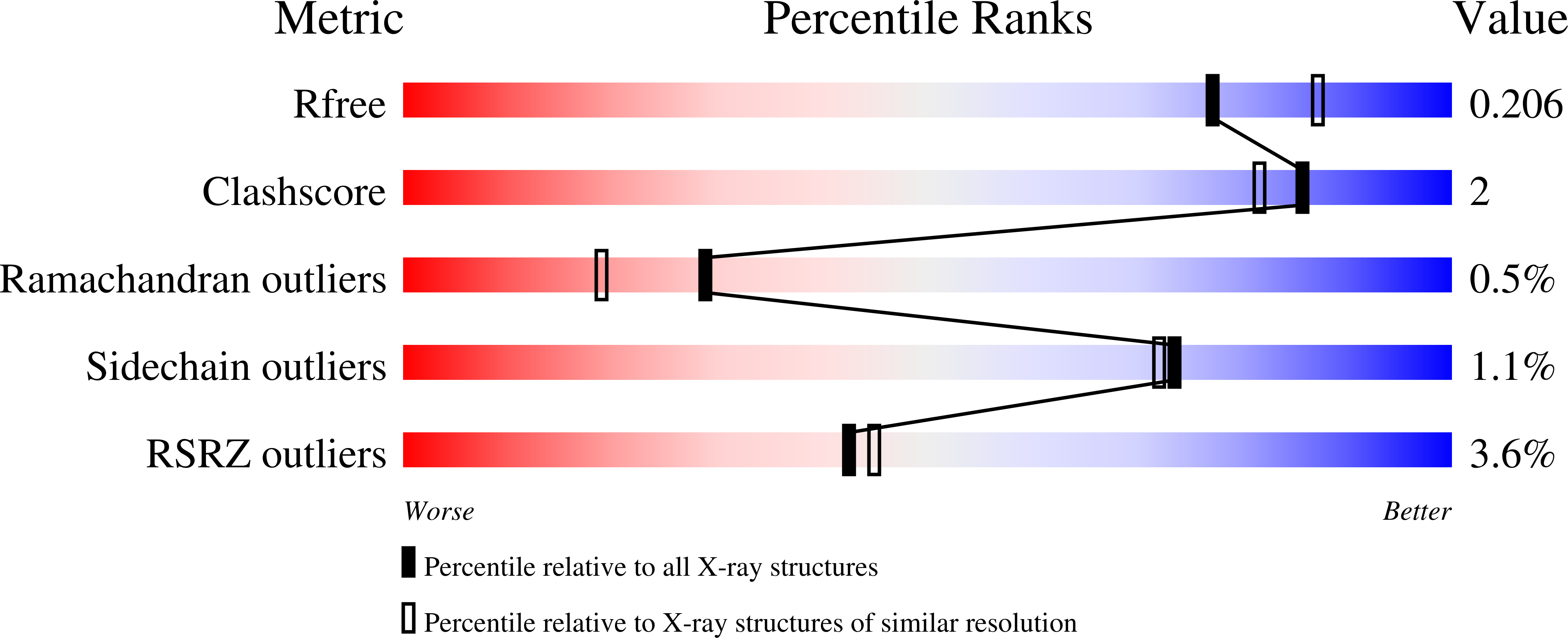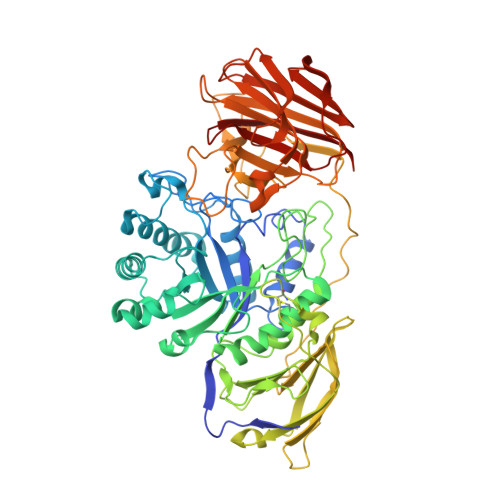Structural Snapshots Illustrate the Catalytic Cycle of Beta-Galactocerebrosidase, the Defective Enzyme in Krabbe Disease
Hill, C.H., Graham, S.C., Read, R.J., Deane, J.E.(2013) Proc Natl Acad Sci U S A 110: 20479
- PubMed: 24297913
- DOI: https://doi.org/10.1073/pnas.1311990110
- Primary Citation of Related Structures:
4CCC, 4CCD, 4CCE - PubMed Abstract:
Glycosphingolipids are ubiquitous components of mammalian cell membranes, and defects in their catabolism by lysosomal enzymes cause a diverse array of diseases. Deficiencies in the enzyme β-galactocerebrosidase (GALC) cause Krabbe disease, a devastating genetic disorder characterized by widespread demyelination and rapid, fatal neurodegeneration. Here, we present a series of high-resolution crystal structures that illustrate key steps in the catalytic cycle of GALC. We have captured a snapshot of the short-lived enzyme-substrate complex illustrating how wild-type GALC binds a bona fide substrate. We have extensively characterized the enzyme kinetics of GALC with this substrate and shown that the enzyme is active in crystallo by determining the structure of the enzyme-product complex following extended soaking of the crystals with this same substrate. We have also determined the structure of a covalent intermediate that, together with the enzyme-substrate and enzyme-product complexes, reveals conformational changes accompanying the catalytic steps and provides key mechanistic insights, laying the foundation for future design of pharmacological chaperones.
Organizational Affiliation:
Department of Haematology, Cambridge Institute for Medical Research, University of Cambridge, Cambridge CB2 0XY, United Kingdom.


















